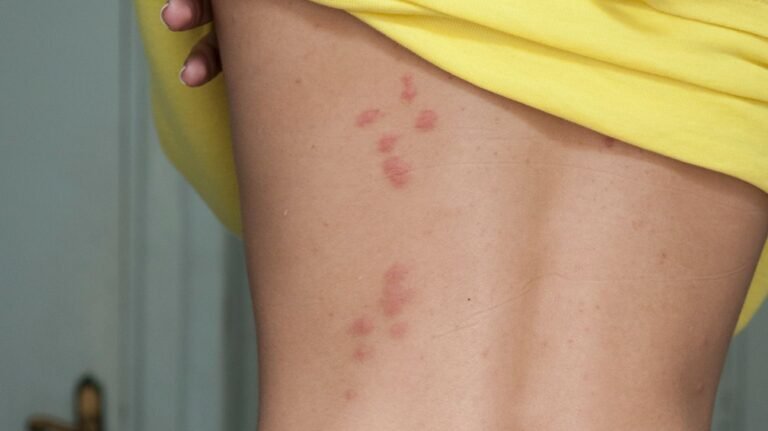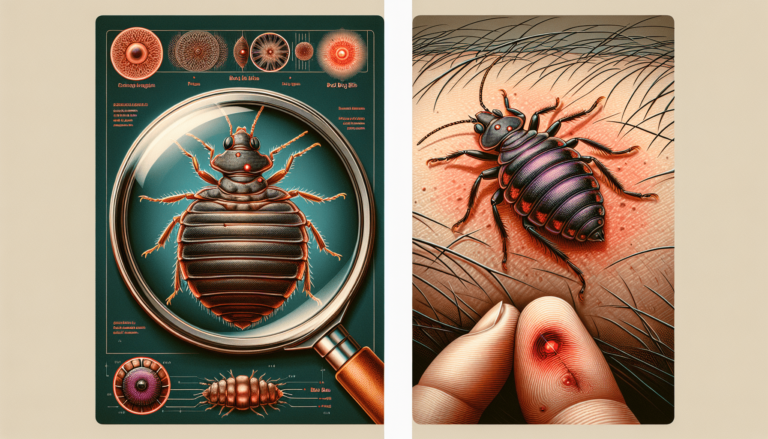What to Do If You Find Bed Bugs
If you find bed bugs in your home, it can be quite distressing. These pesky insects have the ability to invade your personal space and disrupt your sleep. However, there is no need to panic. In this article, we will guide you through the necessary steps to handle a bed bug infestation effectively. From identifying the signs of an infestation to implementing effective treatment methods, we will provide you with expert advice and practical solutions to reclaim your home from these unwelcome intruders. So, if you are currently facing the challenge of bed bugs, read on to discover how to take control of the situation and restore peace to your home.

Identifying Bed Bugs
Bed bugs are small, oval-shaped insects that are typically reddish-brown in color. They are about the size of an apple seed, ranging from 4 to 7 millimeters in length. Adult bed bugs have flat bodies, with six legs and antennae. They do not have wings, so they are unable to fly.
If you suspect you have a bed bug infestation, it is important to be able to recognize the signs. One key sign is the presence of live bed bugs or their eggs. These can be found in various locations, such as seams of mattresses, cracks in furniture, or even in electrical outlets.
Another sign to look out for is the presence of bed bug bites on your body. Bed bug bites are often characterized by red, itchy bumps that may appear in a line or cluster. However, it’s important to keep in mind that not everyone reacts to bed bug bites in the same way, so some people may not have any noticeable reaction at all.
In addition to visual signs, you may also notice unusual smells associated with a bed bug infestation. Bed bugs emit a distinct, musty odor that is often described as smelling like coriander or almonds. If you detect this odor in your living space, it could be a sign of a bed bug problem.
Lastly, some people may experience unusual itches or rashes that seem to appear out of nowhere. These can be caused by bed bug bites, and if you are experiencing these symptoms and cannot find any other explanation, it may be worth considering a bed bug infestation as the cause.
Preventing Further Spread
Once you have identified a bed bug infestation, it is crucial to take immediate action to prevent further spread. Bed bugs are notorious for their ability to multiply quickly and infest multiple areas of a home, so swift action is necessary to prevent a larger infestation.
One common misconception about bed bug spread is that they are only found in dirty or cluttered environments. In reality, bed bugs can be found in both clean and unclean spaces, as they are primarily attracted to the warmth and carbon dioxide emitted by humans. Therefore, it is important to debunk this misconception and understand that anyone can encounter a bed bug infestation, regardless of cleanliness.
To minimize the risk of spreading bed bugs, it is essential to reduce clutter in the room. Bed bugs can hide in various objects, such as clothing, bedding, and furniture, so removing unnecessary items can reduce their hiding spots and make it easier to locate and treat the infestation.
Another effective method of preventing the spread of bed bugs is to cover your bed and mattress. Encasing your mattress and box spring in a bed bug-proof cover can help trap any bed bugs that may be present and prevent them from escaping or multiplying further. Additionally, using light-colored bedding can make it easier to spot any bed bugs or signs of infestation.
Sealing openings or cracks in your home can also help prevent the spread of bed bugs. Bed bugs can crawl through even the tiniest gaps, so it is important to seal any cracks or crevices where they could potentially hide. This includes sealing gaps around baseboards, electrical outlets, and pipes.
Home Treatment Options
If you discover a bed bug infestation in your home, there are several home treatment options you can try to eliminate these pests.
One effective method is to launder your clothes and bedding at high temperatures. Bed bugs are highly sensitive to heat, so washing your infested items in hot water and drying them on high heat can help kill the bugs and their eggs. It is important to make sure you follow the manufacturer’s instructions for washing and drying your items to ensure they are not damaged.
Using bed bug sprays can also be an effective home treatment option. There are several insecticides available on the market that are specifically designed to kill bed bugs. When using these sprays, it is important to carefully follow the instructions and take necessary precautions to protect yourself and others from exposure to the chemicals.
In addition to using insecticides, vacuuming your home regularly can help remove bed bugs and their eggs from your living space. It is important to use a vacuum cleaner with a high-efficiency particulate air (HEPA) filter, as this will help capture the tiny bed bug particles. Vacuuming should be done thoroughly, paying close attention to areas where bed bugs are likely to hide, such as mattress seams, furniture cracks, and baseboards.
If you prefer to use home remedies, there are several options that have been suggested to help control bed bug infestations. These include diatomaceous earth, which is a natural substance that can be sprinkled in areas where bed bugs are present to dehydrate and kill them. Other home remedies include using essential oils, such as tea tree oil or lavender oil, which are believed to repel bed bugs. It is important to note that while these home remedies may have some impact on bed bugs, they are not as effective as professional treatment options.
Professional Treatment Options
While home treatment options can be effective for small, localized infestations, severe or widespread infestations may require professional assistance. Finding a reliable pest control professional is crucial to ensure the complete eradication of bed bugs from your home.
When searching for a pest control professional, it is important to look for a reputable company with experience in dealing with bed bug infestations. You can ask for recommendations from friends, family, or neighbors, or conduct online research to find highly-rated pest control companies in your area.
Understanding the costs and procedures involved in professional bed bug treatment is also important. The cost of professional treatment can vary depending on the size of the infestation and the methods used. It is recommended to get quotes from multiple companies and compare their services and prices before making a decision.
During the treatment process, the pest control professional will use a combination of methods to eliminate the bed bugs, such as insecticides, steam treatments, and heat treatments. They will also provide instructions on how to prepare your home before treatment and may schedule follow-up visits to ensure the infestation has been completely eradicated.
Taking preventive measures after professional treatment is crucial to avoid a recurring infestation. The pest control professional will provide instructions on how to prevent bed bugs from re-infesting your home, such as regular cleaning, using mattress encasements, and being cautious when traveling or bringing second-hand furniture into your home.

Treating Bed Bug Bites
If you have been bitten by bed bugs, there are several treatment options available to alleviate the symptoms and speed up the healing process.
Over-the-counter treatments, such as antihistamine creams or oral antihistamines, can help reduce itching and inflammation caused by bed bug bites. These can be easily obtained from a pharmacy without a prescription. It is important to carefully follow the instructions and consult a healthcare professional if you have any underlying medical conditions or are taking other medications.
For more severe reactions or persistent symptoms, seeking professional medical care may be necessary. A healthcare professional can prescribe stronger antihistamines or corticosteroids to alleviate symptoms and promote healing. They may also recommend other treatments, such as topical corticosteroids or antibiotics, if there is a risk of infection.
In addition to traditional medical treatments, there are also home remedies that can provide relief from bed bug bites. Applying a cold compress or ice pack to the affected area can help reduce inflammation and itching. Natural remedies, such as aloe vera gel or tea tree oil, can also provide soothing effects. It is important to note that these remedies may not work for everyone, and it is always best to consult with a healthcare professional for proper diagnosis and treatment.
In some cases, bed bug bites may result in more severe reactions or complications, such as an allergic reaction or secondary infection. If you experience symptoms such as difficulty breathing, severe swelling, or spreading redness, it is important to seek medical attention immediately.
Informing Your Surroundings
When dealing with a bed bug infestation, it is important to inform your neighbors and landlord to prevent the spread of these pests to other units or areas.
Notifying your neighbors can help them take necessary precautions to prevent a potential infestation in their own living spaces. They can inspect their own homes and take appropriate measures to minimize the risk of bed bugs spreading. By working together, you can prevent a larger infestation and protect the entire community.
It is also important to inform your landlord or property manager about the infestation. They have a responsibility to address the issue promptly and take necessary actions to eliminate the bed bugs. This may involve hiring a professional pest control company to treat the entire building or complex.
While it can be embarrassing or stigmatizing to admit to having bed bugs, it is important to remember that anyone can encounter these pests, regardless of their cleanliness or living conditions. By openly discussing the issue and educating others about bed bug prevention and treatment, we can help reduce the stigma associated with these pests and promote a more proactive approach to addressing infestations.
Common Places for Bed Bug Infestations
Bed bugs are highly adaptable pests that can be found in a variety of environments. Understanding their habits and recognizing risk locations can help you minimize the chance of encountering bed bugs.
Bed bugs are primarily nocturnal insects that feed on human blood. They are attracted to warmth and carbon dioxide, which is why they are commonly found near sleeping areas. Hotels and motels are common hotspots for bed bug infestations, as they provide ample opportunities for these pests to travel from one location to another. When staying in hotels or motels, it is important to thoroughly inspect the room for any signs of bed bugs, such as live bugs, blood stains, or fecal spots.
In addition to hotels and motels, bed bugs can also be found in public spaces, such as public transportation, movie theaters, and libraries. These areas provide opportunities for bed bugs to hitch a ride on unsuspecting individuals and spread to other locations. Being cautious and vigilant when in these spaces can help prevent bringing bed bugs into your home.
Bed bugs can also infest furniture, particularly second-hand or used furniture. When purchasing furniture, it is important to carefully inspect it for any signs of infestation, such as live bugs, shed skins, or fecal spots. It may also be helpful to treat the furniture with heat or insecticides before bringing it into your home.
Knowing Your Rights As a Tenant
When dealing with a bed bug infestation in a rental property, it is important to understand your rights as a tenant. Laws and regulations regarding bed bug infestations can vary depending on your location, so it is important to familiarize yourself with the specific regulations in your area.
In many jurisdictions, landlords are responsible for ensuring that rental properties are free from bed bug infestations. This includes taking necessary actions to eliminate the infestation and prevent it from recurring. Landlords may be required to hire professional pest control services and cover the cost of treatment.
As a tenant, you have the right to request that your landlord address the bed bug infestation promptly. It is important to document the infestation, including photographs and written correspondence with your landlord, to have evidence of the issue. If your landlord fails to take appropriate actions to address the infestation, you may have legal remedies available to you, such as withholding rent or initiating legal proceedings.
It is important to consult with a legal professional or tenant rights organization in your area to fully understand your rights and options when dealing with a bed bug infestation as a tenant.
Psychological Impact of Bed Bugs
Dealing with a bed bug infestation can have a significant psychological impact on individuals and households. The presence of these pests can cause feelings of anxiety, stress, and even sleep disturbances.
Managing stress and anxiety is an important aspect of coping with a bed bug infestation. It can be helpful to seek support from friends, family, or support groups who have experienced similar situations. They can provide guidance, empathy, and practical advice on how to deal with the emotional toll of dealing with bed bugs.
Professional counseling or therapy sessions can also be beneficial for individuals who are struggling with the psychological impact of a bed bug infestation. A trained therapist can help individuals develop coping strategies, provide a safe space to express their emotions, and offer tools to manage stress and anxiety.
It is important to remember that the psychological impact of bed bugs is not a reflection of personal cleanliness or hygiene. Bed bugs can infest any living space, regardless of cleanliness, and it is important to separate the infestation from personal self-worth. By seeking support and addressing the emotional impact, individuals and households can better navigate the challenges associated with bed bug infestations.
Re-Establishing the Safety of Your Home
After successfully treating a bed bug infestation, it is important to take steps to re-establish the safety and cleanliness of your home.
Developing a long-term prevention plan is crucial to minimize the risk of a recurring infestation. This may include regular inspections, implementing preventive measures, and maintaining cleanliness and hygiene in your living space. By being proactive and vigilant, you can prevent future bed bug infestations and minimize the impact on your daily life.
Monitoring for recurrence is also important, as bed bugs can be persistent pests. Regularly inspecting your home and maintaining a high level of cleanliness can help identify any signs of a new infestation early on. Prompt action and treatment can prevent a minor infestation from turning into a major problem.
Lastly, reinforcing the safety and cleanliness of your home is essential for peace of mind. This includes maintaining good housekeeping practices, such as regular vacuuming, washing bedding and clothing, and reducing clutter. By creating a clean and organized environment, you can prevent bed bugs and other pests from finding harborage in your home.
In conclusion, bed bug infestations can be a challenging and stressful experience. However, by being knowledgeable about bed bug identification, treatment options, and preventive measures, you can effectively combat these pests and restore the safety and comfort of your home. Remember to seek professional assistance when necessary and to prioritize your mental well-being throughout the process. With the right actions and mindset, you can overcome a bed bug infestation and prevent future occurrences.






